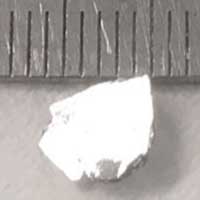| Dec 17, 2019 |
|
(Nanowerk News) Since their discovery in 2006, topological insulators have been widely discussed as a promising avenue for energy efficient electronics. Their unique high mobility edge states have a form of quantum armour that protects them from electron-scattering events that would otherwise produce waste heat.
|
|
Unfortunately, practical applications of topological insulators have been severely limited by the small electronic bandgaps in most known materials. This means that, while they function well at very low temperatures by producing highly mobile surface electrons, at higher temperatures the bulk electronic states dominate, and these are no better than in other traditional semiconductors.
|
|
Now a team, led by Professor Xiaolin Wang (UOW) and in collaboration with Michael Fuhrer (Monash), have combined clever chemistry and advanced electronic measurements to develop a new topological insulator with a wide bandgap of above 300 meV, which is twelve times larger than the thermal energy of a room temperature system.
|
|
The lead author of the study (npg Quantum Materials, “Quantum oscillations of robust topological surface states up to 50 K in thick bulk-insulating topological insulator”), a Weiyao Zhao, a PhD student at Wollongong explains, The special aspect of this material is the combination of a wide bandgap, and the existence of a robust surface state.
|
 |
| Transport measurement geometry: measuring a freshly cleaved V:BSSTS surface. (Image: FLEET)
|
|
Previous studies have suggested that substituting sulphur into a Sb2Te3 or Bi2Te3 topological insulators would result in a larger band-gap, however practically this is very difficult because the crystal structure becomes unstable owing to the size mismatch of the various atoms.
|
|
To achieve stability, Zhao used a scheme based on co-substitution of sulphur balanced by a small amount of larger vanadium and tin ions resulting the complex material Vx:Bi1.08-xSn0.02Sb0.9Te2S (such compounds are sometimes jokingly referred to as telephone number compounds by physicist and chemists owing to their long chemical formulas).
|
|
This compound was the culmination of two years of experimentation by Zhao who is now in the final year of his PhD at Wollongong.
|
|
A key finding was the clear evidence of an increasing band-gap that scales with vanadium content. In tandem, using a transport technique based on observing quantum oscillations for magnetic fields at different angles, the team was able to demonstrate that the surface state is active up to the large temperatures of 50 K. This places the material on par with the best known topological insulators.
|
|
With the large intrinsic band-gap there are strong prospects for further increasing the operational temperatures through reducing defect concentrations and deploying nanofabrication techniques.
|
 |
| Large-scale topological insulator crystal. (Image: FLEET)
|
|
Prof. Wang said We are able to observe the robust topological 2D surface state at temperature as high as 50K in magnetic fields up to 14 Tesla on large-size topological insulator crystals. This is remarkable as large 3D topological insulating crystals can be used as new class of substrate to host novel quantum states such as Majorana fermions and other spin-dependent effects.
|
|
This development fits with the theme of enabling technology within FLEET that aims to develop materials that can operate at high temperature to replace silicon in computing technologies.
|



